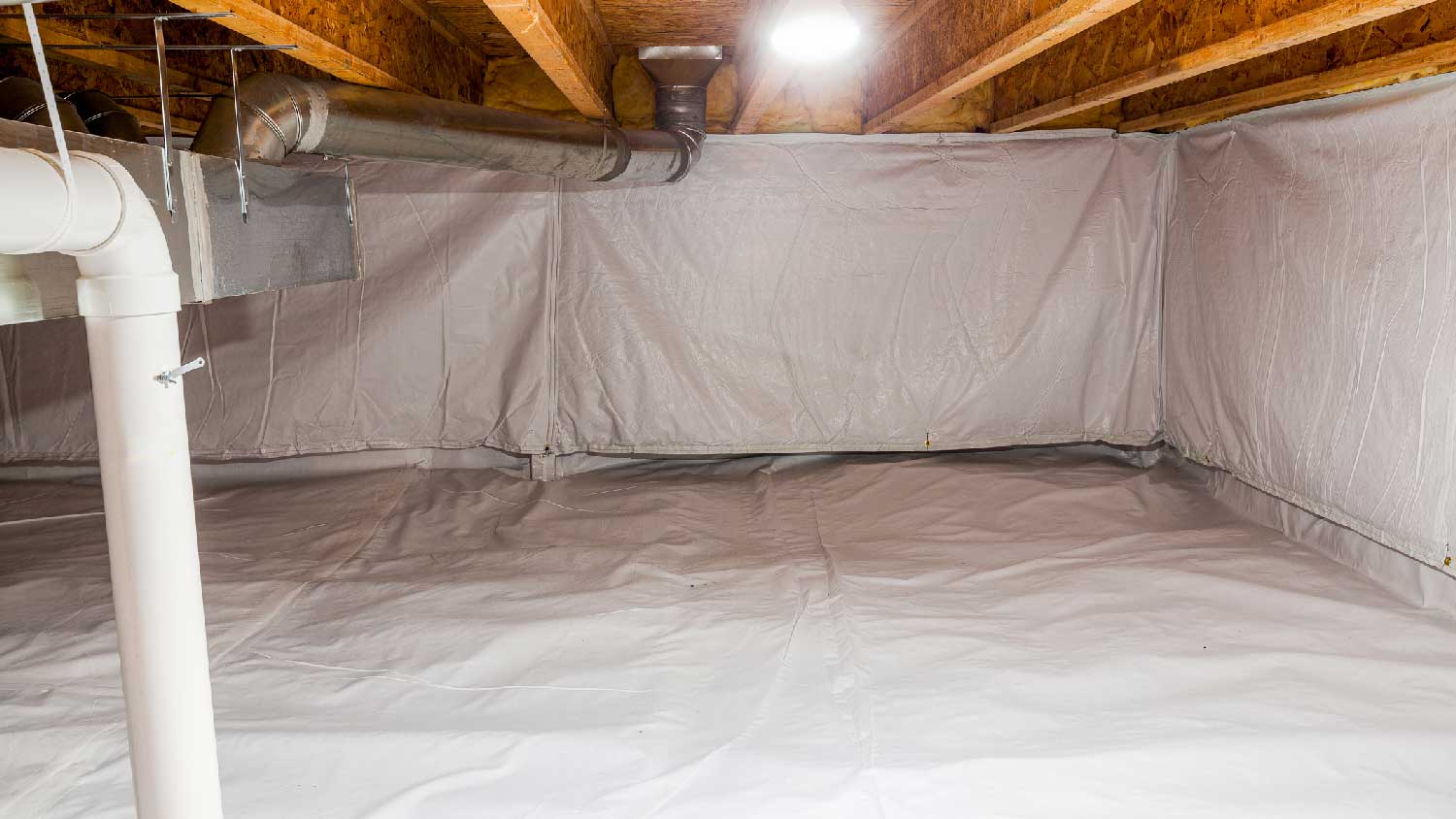7 Crawl Space Maintenance Tips for a Safe and Dry Home
Don’t neglect this hidden but important part of your home


You may not give your home’s crawl space much thought, but failing to maintain this rarely visited area can lead to energy loss, mold growth, moisture intrusion, and pest invasions. Crawl spaces provide space between the ground and your home, and when problems arise, they can cost you a lot in remediation and repairs. Follow these seven simple tips to keep your crawl space dry and protected.
1. Install Insulation

Just like your home’s walls, ceilings, floors, and roof need to be insulated to prevent energy loss and keep your home a comfortable temperature, so does your crawl space. Too little or inefficient insulation will lead to heat loss, higher energy bills, drafts, and outside noise.
You have several choices for crawl space insulation:
Closed-cell spray foam fills in even the smallest gaps and spaces to make an efficient thermal barrier. Spray foam can be more expensive than other types of insulation and should be installed by a professional.
Foam board is moisture-resistant and provides good thermal retention. You can install foam board yourself, but make sure it’s properly installed and sealed to prevent heat loss.
Fiberglass batting is often found in crawl spaces, especially in older homes, but it’s not the best insulation choice for these areas. Fiberglass can absorb moisture, leading to decreased energy efficiency and potential mold growth.
2. Encapsulate the Crawl Space
Crawl space encapsulation is the most effective way to protect against moisture. Moisture intrusion in your crawl space can cause problems like mold growth and wood rot, so it’s important to take steps to prevent moisture from making its way into the crawl space.
Crawl space encapsulation involves installing a moisture barrier, usually made of polyethylene, to seal off the floor, walls, and ceiling of the crawl space. The barrier prevents moisture from entering the area, protecting against mold and rot. Hire a local basement waterproofing pro to ensure the job is done correctly and safely.
3. Use a Dehumidifier
A dehumidifier is a key tool to achieve a dry crawl space with improved air quality. Humidity can enter your crawl space even if it’s encapsulated and insulated, and the longer that moisture stays in the air, the more damage it can do. An efficient dehumidifier will quickly pull moisture out of the air and keep the crawl space dry—a must-have during humid summers and rainy periods.
4. Protect Against Pests

Since crawl spaces are rarely visited and are in direct contact with the ground, they’re a prime spot for pest problems. Rodents, insects, and other pests often make their home in crawl spaces, which can bring health problems and property damage into your home as these tiny invaders spread out from their home base in your crawl space.
Encapsulation, removing humidity, and sealing cracks and gaps can all help keep pests away. Regularly check your crawl space for signs of pests and enlist the help of pest control professionals if a problem is beginning to form.
5. Ensure Proper Drainage
Because crawl spaces are located at ground level, they’re susceptible to flooding. Poor drainage can cause water to pool in your crawl space, which can lead to structural damage, mold and mildew growth, and foundation erosion.
Keep your home’s drainage system well maintained by keeping gutters clear, ensuring downspouts are directed away from the foundation, and installing a sump pump in low-lying parts of your home. In some cases, you may need separate drainage for your crawl space. Hire a crawl space contractor to assess the area and install any necessary drainage.
6. Keep it Clean

You might think your crawl space won’t need regular cleaning since it’s rarely used, but cleaning is an important part of crawl space maintenance. In addition to removing debris and clearing out cobwebs or other signs of pests, cleaning up your crawl space can also alert you to any issues like mold growth, rotting wood, damaged insulation, and more.
If the task seems too daunting or you don’t enjoy small spaces, hire a pro who cleans crawl spaces to tackle the job. Crawl space cleaning costs an average of $0.55 to $2.70 per square foot. If any significant problems are found, crawl space repairs can cost several thousand dollars, depending on the extent of the needed repairs.
7. Get an Annual Inspection
Have your crawl space inspected every year to stay ahead of potentially costly problems. A crawl space inspector will follow a crawl space inspection checklist to assess the condition of your crawl space, look for signs of rot, mold, structural damage, water intrusion, and pests.
Performing necessary repairs before the problem worsens will save you a lot of time and money, and will keep your crawl space and your home dry, energy-efficient, and protected against health problems and property damage.
"Safety is key when working around foundations, crawlspaces, and basements. Always wear protective gear like gloves, masks, and goggles, and ensure proper ventilation. Minor tasks like filling small cracks and basic inspections can be DIY projects, but leave structural repairs, extensive waterproofing, and significant drainage work to the pros."
— Tim O'Shea, The Build Pros





- The Importance of Insulating Your Crawl Space
- How to Hire a Crawl Space Contractor
- Who Can Inspect My Crawl Space?
- What is Crawl Space Encapsulation: Pros, Cons, and Everything You Need to Know
- Who Cleans Crawl Spaces?
- How to Keep Your Crawl Space Dry: 8 Tips to Prevent Moisture
- Crawl Space Code Requirements You Should Know
- What Is a Crawl Space Foundation and Is It Right for Your Home?
- Should Crawl Space Vents Be Open or Closed?
- 8 Tips on How to Insulate a Crawl Space










